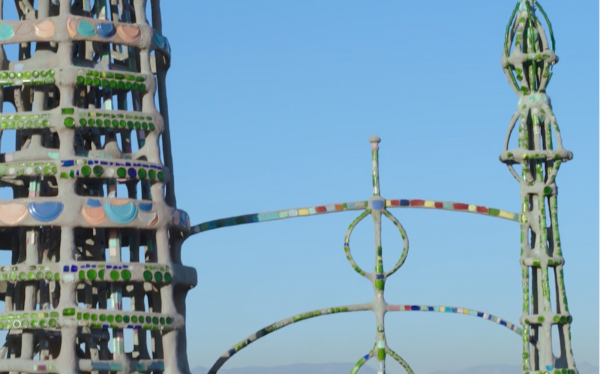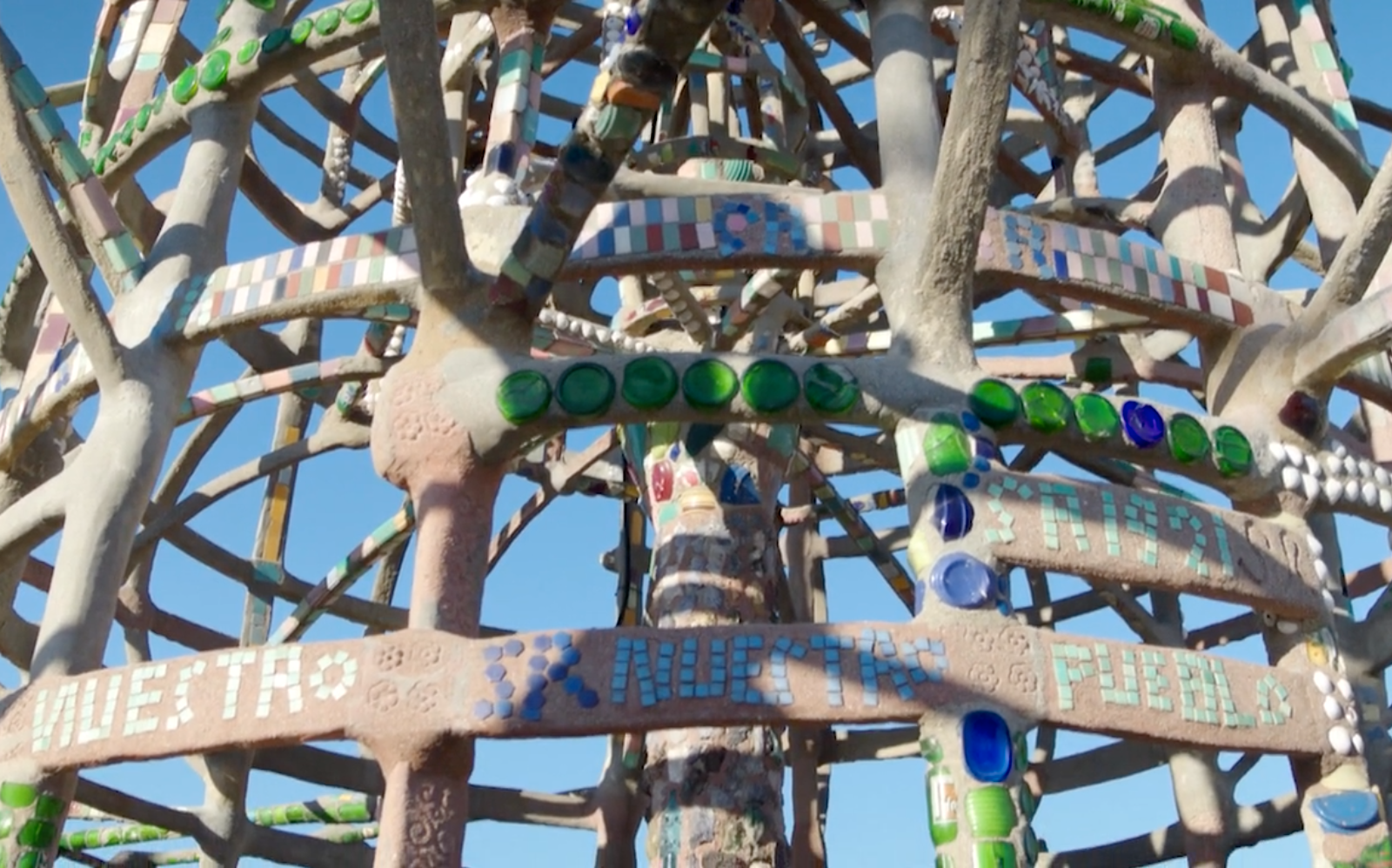This summer, LACMA launched the YouTube series ART + WORK, which shows the care that museum conservators put into preserving a wide range of artworks from our permanent collection.
In this video, Associate Conservator Lily Doan repairs and secures some of the thousands of glass, ceramic, and shell ornaments on the Watts Towers, a mosaic sculpture in South Los Angeles built in 1921 by artist Simon Rodia.
Below, Lily explains how LACMA conservators have skillfully cared for these ornaments and kept them in tact over many years.
Tell me a little bit about your work at Watts Towers.
One of the most pervasive condition issues at Watts Towers are detached fragments. We often find fragments that have fallen off the sculpture and landed onto the ground.
One of the things that LACMA put together, when we first joined onto the site back in 2011, was trying to create a protocol for dealing with all of these fallen fragments. So we have a protocol where one of our technicians will go out, survey the site, find all of the broken fragments, and we document and take photographs of where the fragments have fallen and then we try to figure out where they fell from. This is hard because they could have fallen from quite high up and without scaffolding, which is the majority of the time, we can really only look up about maybe eight feet or so. So we try to do what we can about 10 feet up. And if we are able to locate where the fragment came from, then we record that information, all that contextual information, and this all gets put into a database and the fragments are inventoried and stored in our office.
What makes the Watts Towers a unique site for conservation work?
It's a site of 17 connected structures. We consider it to be a mosaic sculpture and it's reinforced concrete with ornaments that are embedded. Simon Rodia was an Italian immigrant who came to America, at about the turn of the century. When he was in his forties, he purchased a plot in Watts, Los Angeles, and he built these structures in his backyard.
I think what most people are enamored by when they visit the site are the ornaments, because they catch the light, they bring color to the sculpture. What's really interesting about the ornaments is it's kind of a time capsule because the ornaments are basically what make the sculpture a found sculpture. They are objects that he Rodia found around town. They are ephemera from the time period—glass bottles, Milk of Magnesia bottles, 7 Up bottles, sodas that aren't even in existence anymore. So it's really kind of like an encapsulation of the ephemera of that time period when he was working on the sculpture.
What causes ornaments to fall off the sculpture?
As a general rule, every material under the sun, every type of material in existence, will be affected by the elements. The towers being subjected to the outdoor environment, to sun, to the heat from the sun to light, UV, to wind, to earthquakes, all of this is going to deteriorate the towers to some extent.
With regards to the ornaments, concrete will weather, whether it's just from windy weather, whether it's from, you know, exposure to the sun and you have a bit of breakdown on the surface. You can tell that the surface is weathered because it just has a really rough texture to it. And you see a lot of exposed aggregate, as we call it, which is like pieces of sand that Rodia added into the cement mixture. This weathering away of the concrete will expose the edges of the ornaments because ornaments were pushed into the concrete. And so the edges are protected and it's kind of locked into the concrete. But with the concrete weathering away, there’s less of the mechanism of the ornament being locked in, and its edges are exposed. When the edges are exposed, moisture can seep in from rain, or from condensation too. Then that causes issues in the concrete.
But we've been seeing a lot of biological growth, mold that's under the glass in particular, because glass is nonporous. It traps all of that moisture in between the glass and the concrete, and then mold will cause the ornaments to fall off. We've noticed that the majority of the fragments that have fallen off of the sculpture are glass and also crockery,. bowls and plates that are glazed on both sides.The surface that's embedded into the concrete is the glaze, which is also non-porous.
In what other ways do you treat the ornaments on the towers?
It's so crucial to stabilize the ornaments before they fall off. To do that, we do mortar edging, or what we can in situ stabilization. We are trying to stabilize the ornaments that are on the sculpture while they're still on the sculpture. We have taken the time to literally touch as many ornaments as we can and see what is loose. If they are loose, if they sound unstable, we will also do some tapping. If they're unstable at all, we take the steps to stabilize them. Even if the ornaments aren't loose or aren’t coming off when you pull on them, we are still locking them into place with the mortar. We are making sure that water is sealed out so that moisture doesn't seep in and cause damage and that microbiological growth does not develop. We are also locking the ornaments in place with the mortar to give it a little bit of extra mechanical strain to keep them on there. This is just trying to make sure that these ornaments are stable and will stay on the sculpture for another 20 years.





